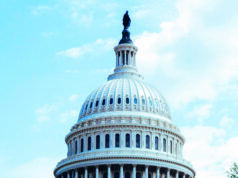 Inflation-adjusted Medicare reimbursement rates for the 20 most common vascular surgical procedures decreased by more than 20% in the last decade, a new analysis found.
Inflation-adjusted Medicare reimbursement rates for the 20 most common vascular surgical procedures decreased by more than 20% in the last decade, a new analysis found.
The study, which looked the buying power of vascular surgeons, uncovered data showing an unadjusted average fall in payments to vascular physicians of 7.2% over the 2011–21 time period.
A research team that included first-named author Jack M. Haglin, BS, of Mayo Clinic School of Medicine in Scottsdale, Arizona, and corresponding author Andrew J. Meltzer, MD, the chair of vascular surgery at Mayo Clinic Arizona in Phoenix, discovered the greatest decrease was among venous procedures. The findings were published recently in the Annals of Vascular Surgery.
The investigators set out to establish a comprehensive understanding of Medicare reimbursement trends over the 10-year period probed in order to inform evolving payment policy. “Currently, Medicare covers the majority of such services, acting as the primary payer for approximately 70% of all vascular surgery care in the United States,” the authors reasoned.
They used the Centers for Medicare & Medicaid Services (CMS) physician/supplier procedure summary file to identify the 20 procedures most commonly performed by vascular surgeons from 2011–2021. A similar analysis was performed for urology, orthopedic, general and neurological surgeons.
The authors found that the mean unadjusted reimbursement rate for all included procedures decreased by 7.2%. “When all reimbursement data was corrected to 2021 dollars to adjust for inflation, the mean reimbursement for all 20 vascular procedures included in this analysis decreased by an average of 20.1% from 2011 to 2021,” they wrote.
During the same time period, they continued, the adjusted reimbursement rate for all included procedures decreased by an average of 2.0% per year, experiencing an average compound annual growth rate of -2.3%. This indicated “a steady annual decline in reimbursement when adjusted for inflation,” the authors added.
When they compared this trend analysis across other surgical specialties, they discovered that the mean 20.1% decrease observed within vascular surgery was a greater drop than that observed in urology (-17.4%), orthopedic surgery (-15.1%), general surgery (-12.0%) and neurosurgery (-8.3%)
The difference in percent change to mean adjusted reimbursement over the 10-year study period across the five surgical specialties was found to be statistically significant (p<0.001).
“A sub-analysis comparing average change in adjusted reimbursement across procedure type demonstrates that venous procedures experienced the largest average decrease in adjusted reimbursement at -42.4%,” the researchers stated.
They further reported that endovascular procedures experienced the next largest decrease in average adjusted reimbursement at -20.1%. Open procedures decreased the least at -13.9%. This difference across procedure types was also statistically significant (p<0.001), Haglin et al wrote.
The authors concluded: “Medicare reimbursement for common surgical procedures has declined over the last decade. While absolute reimbursement has remained relatively stable for several procedures, accounting for a decade of inflation demonstrates the true diminution of buying power for equivalent work.
“The most alarming observation is that vascular surgeons have faced a disproportionate decrease in inflation-adjusted reimbursement in comparison to other surgical specialists. Awareness of these trends is a crucial first step towards improved advocacy and efforts to ensure the ‘value’ of vascular surgery does not continue to erode.”
Cuts averted
Steep cuts to Medicare that had been set to go into effect this year were averted by Congress late in the day. Thousands of hours of effort by Society for Vascular Surgery (SVS) committees and members were put in to help halt the expected 7% decrease in payments for the services vascular surgeons provide.
Nearly 800 members engaged in grassroots efforts to write to their lawmakers and urge support for stopping the cuts. In four separate efforts to engage with Congress, SVS members sent 2,627 messages to their lawmakers. One campaign, urging Congress to act on bills directed at stopping the cuts, garnered 925 calls to action.
SOURCE: doi.org/10.1016/j.avsg.2021.04.001











